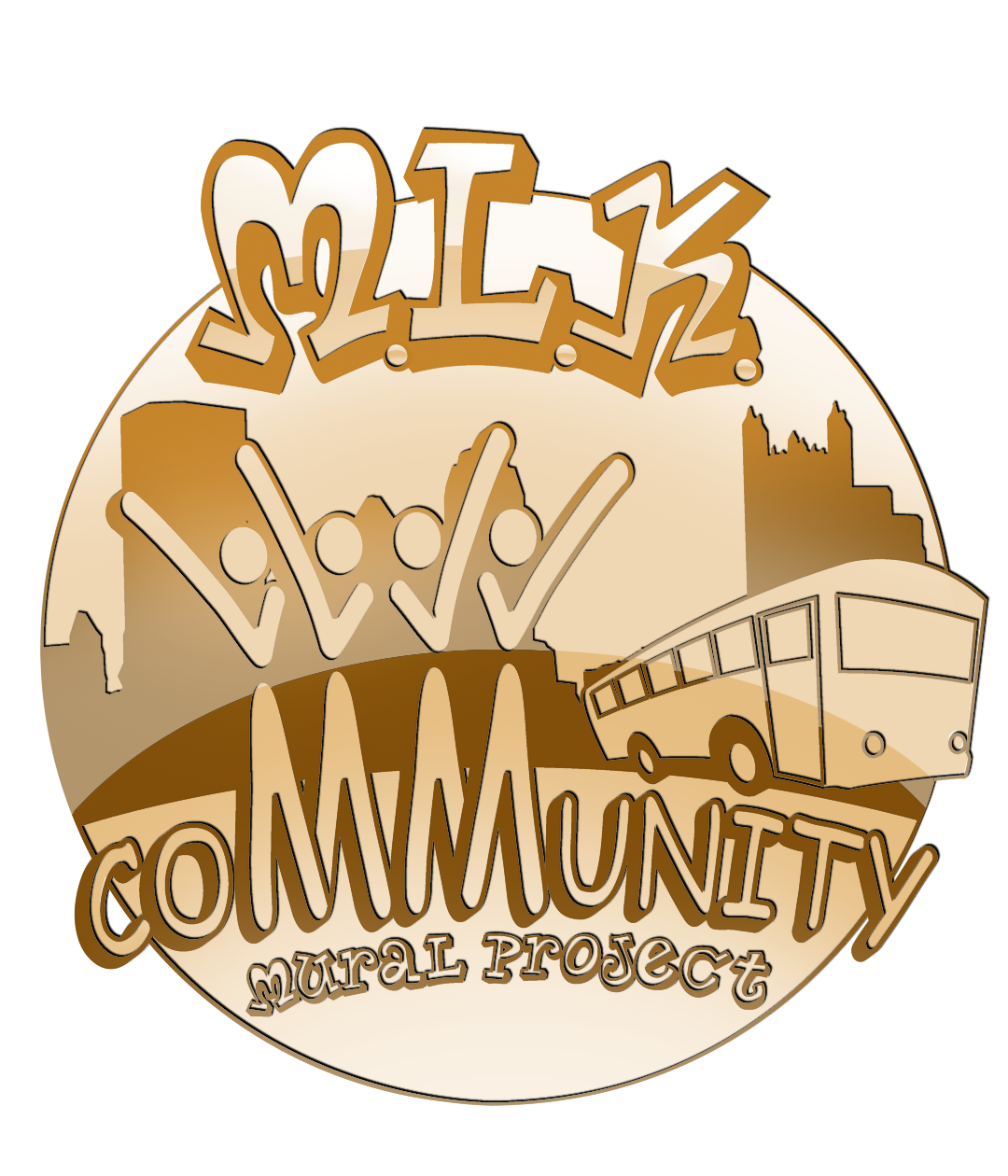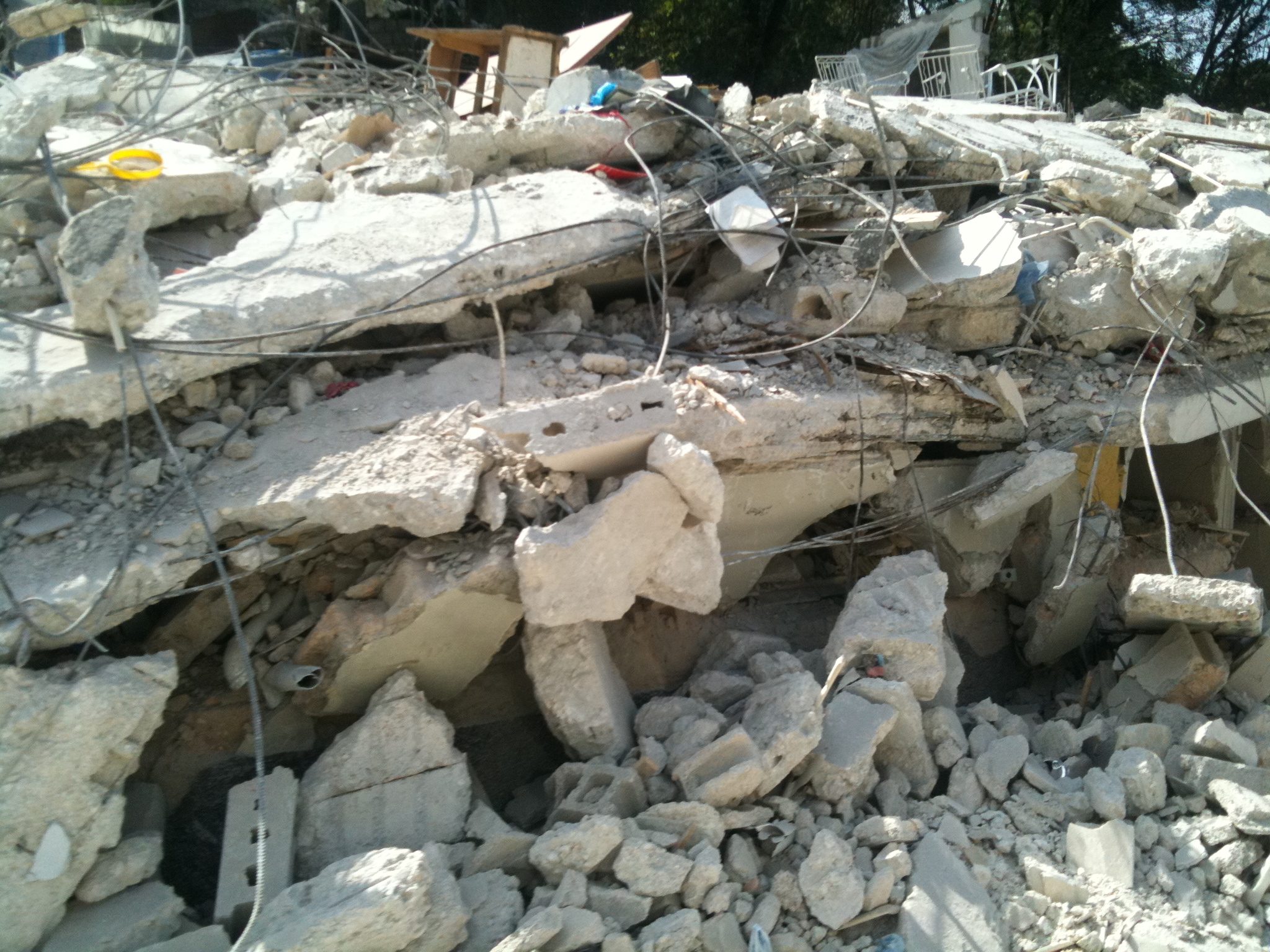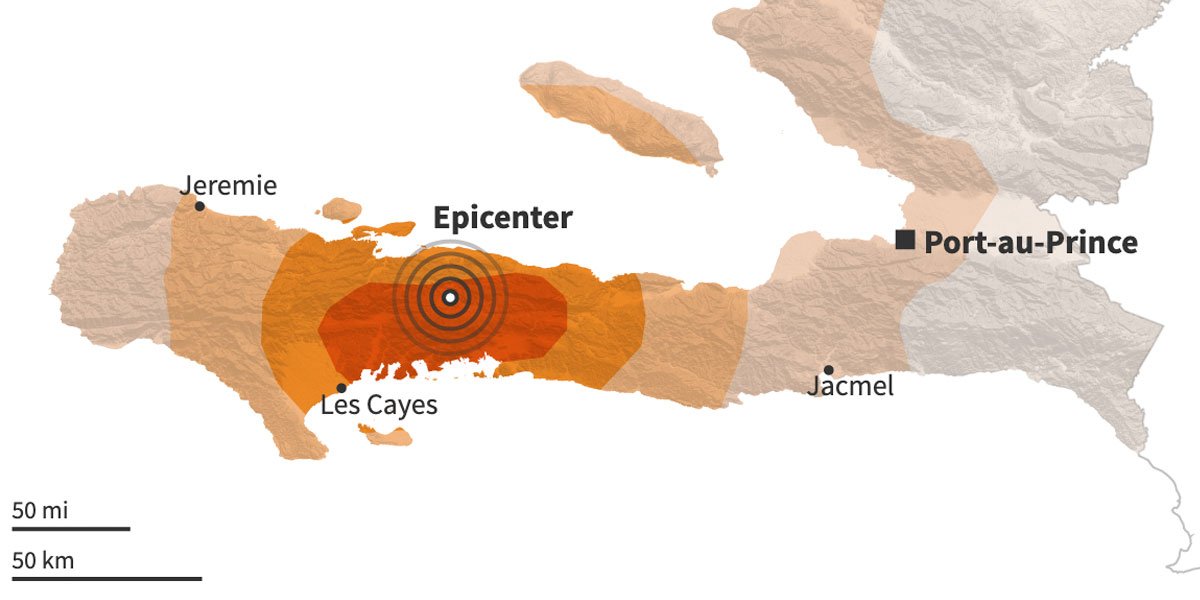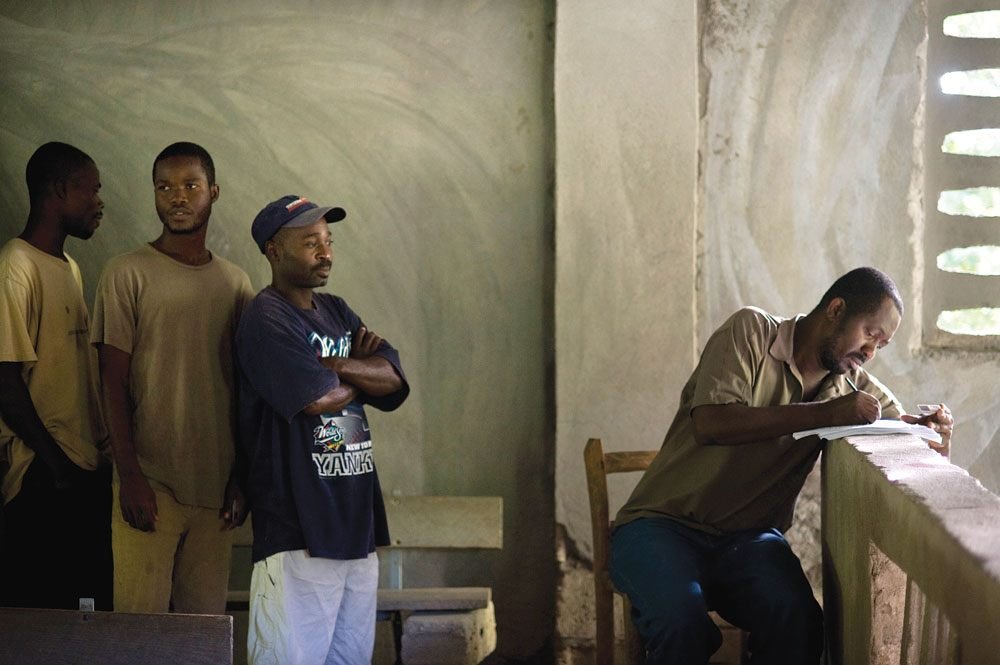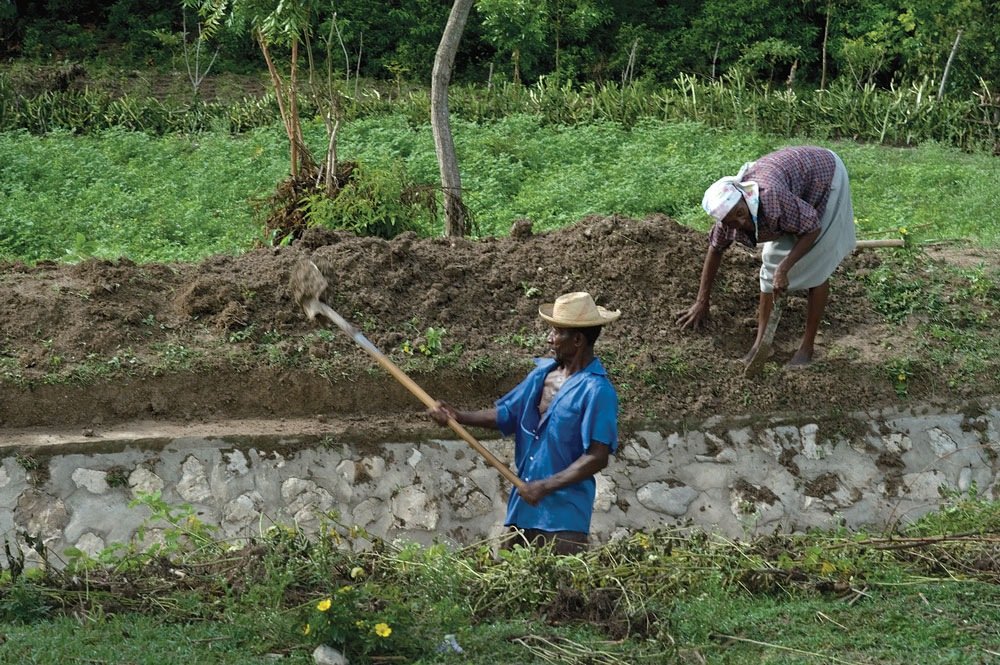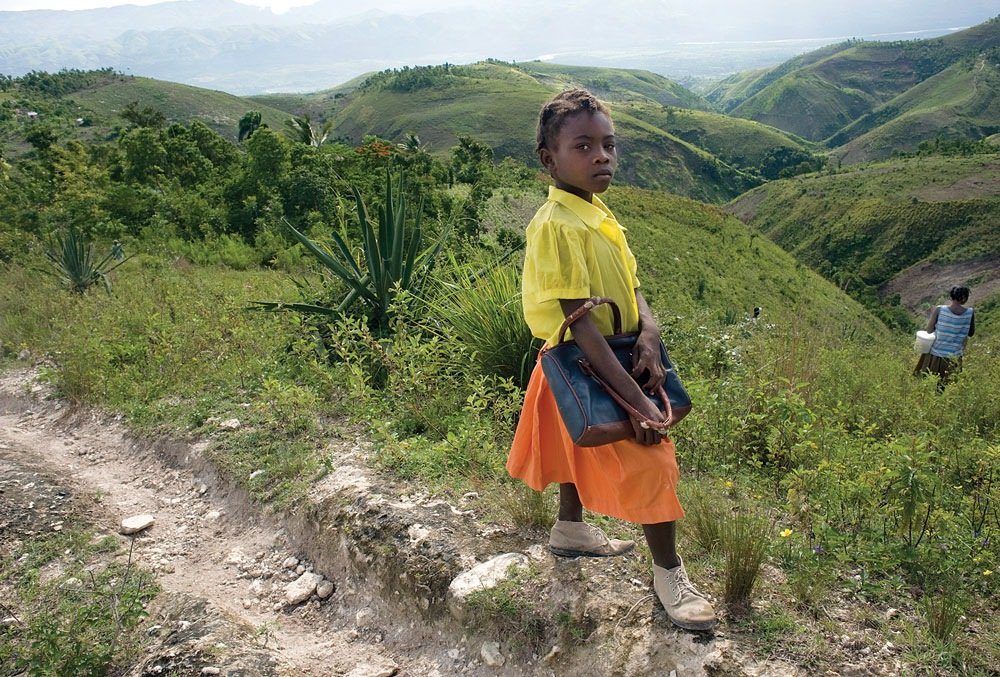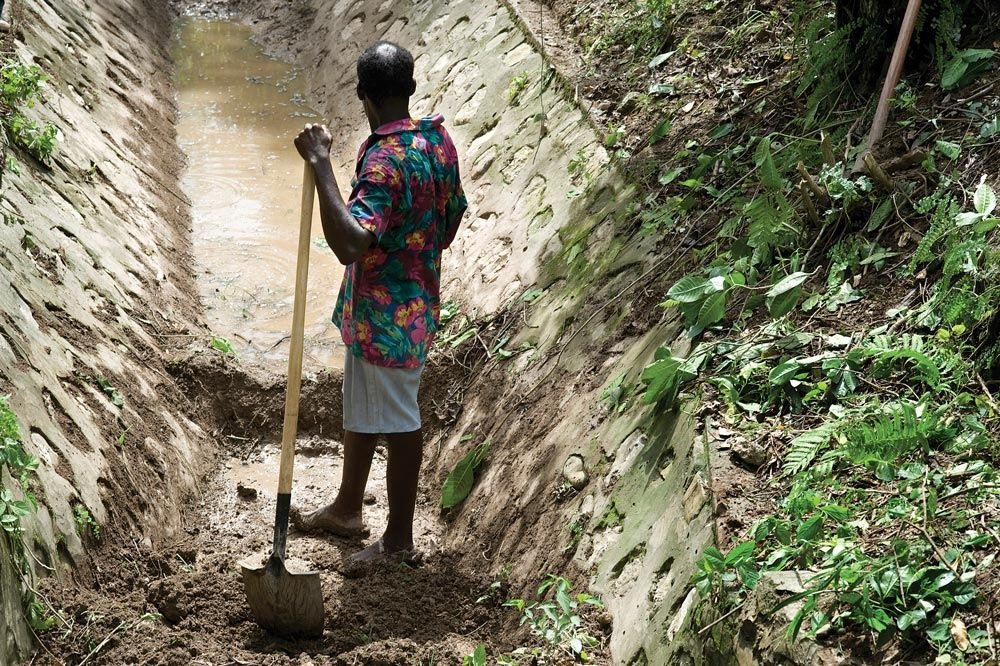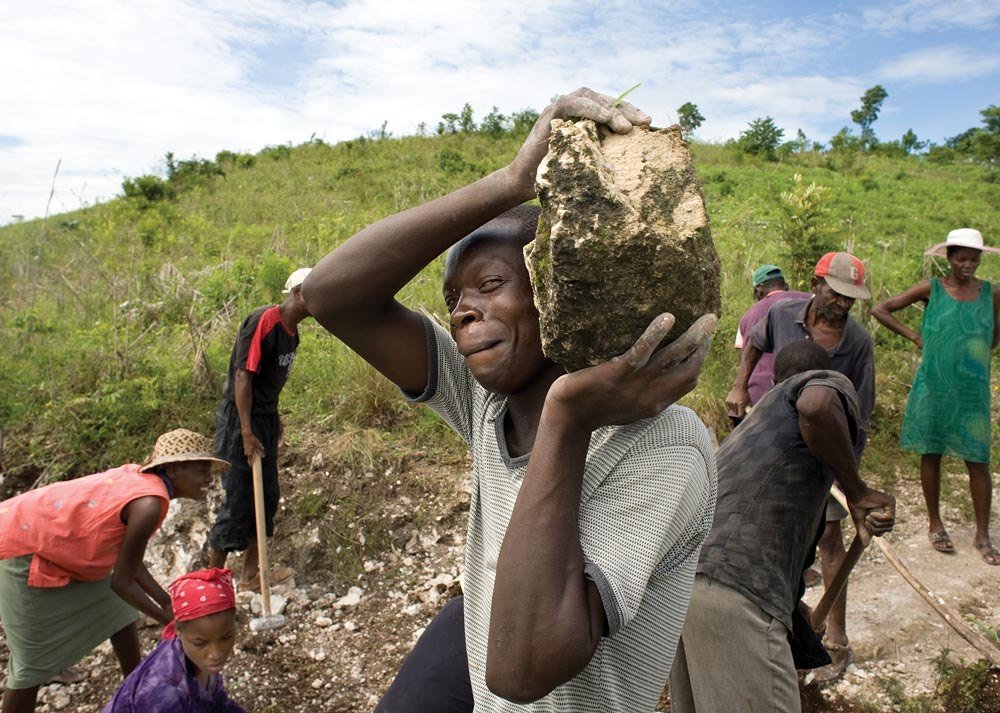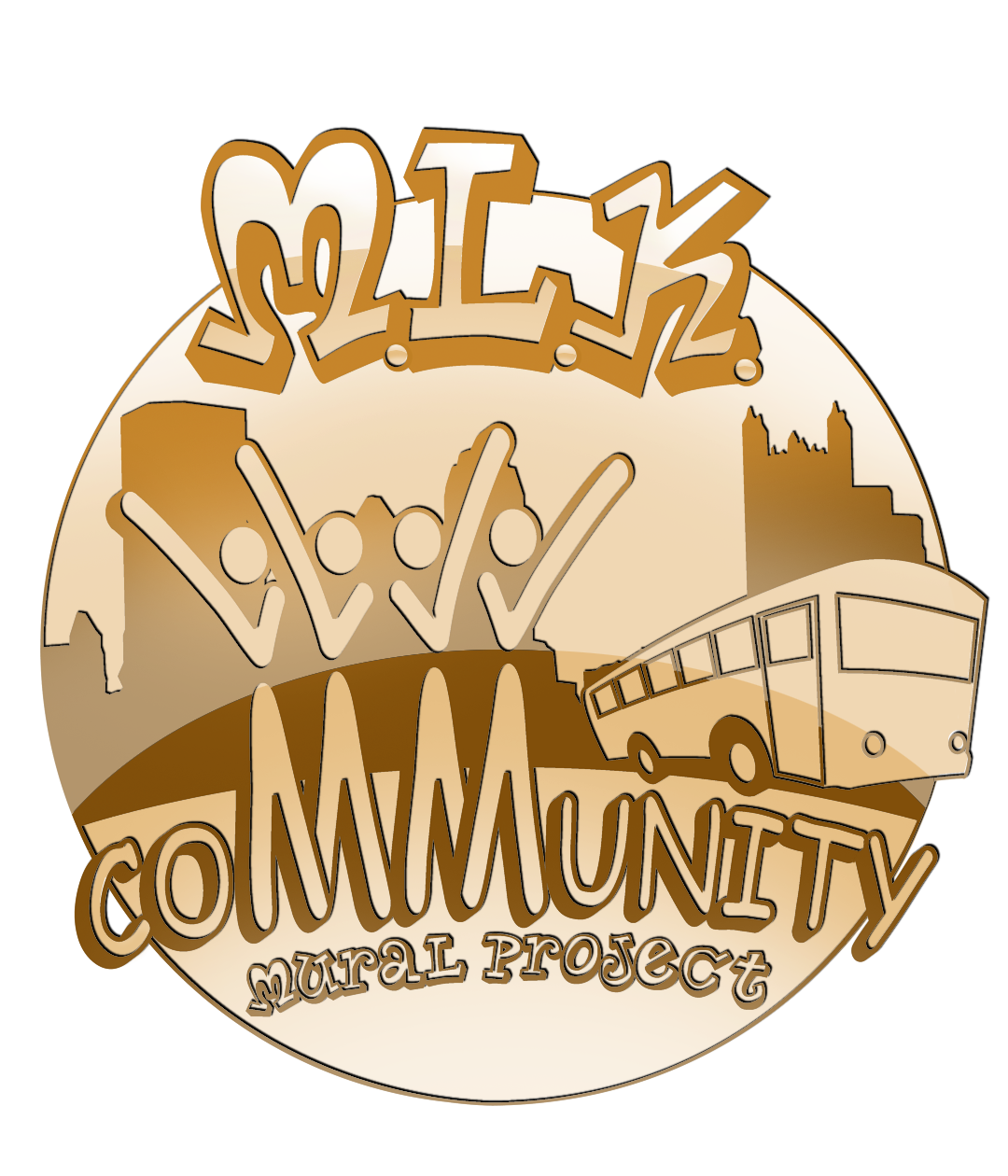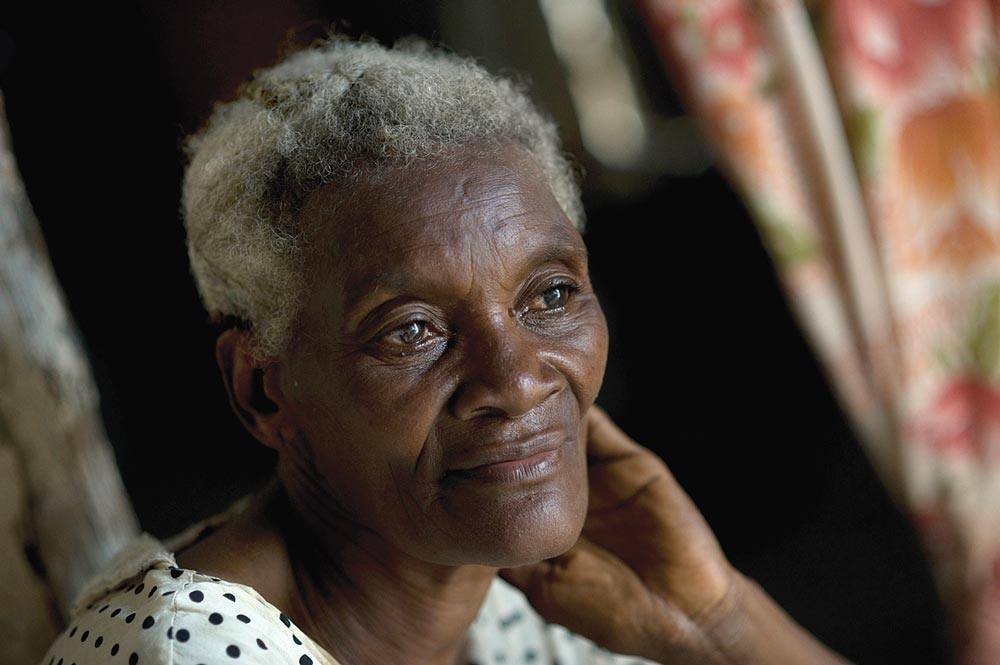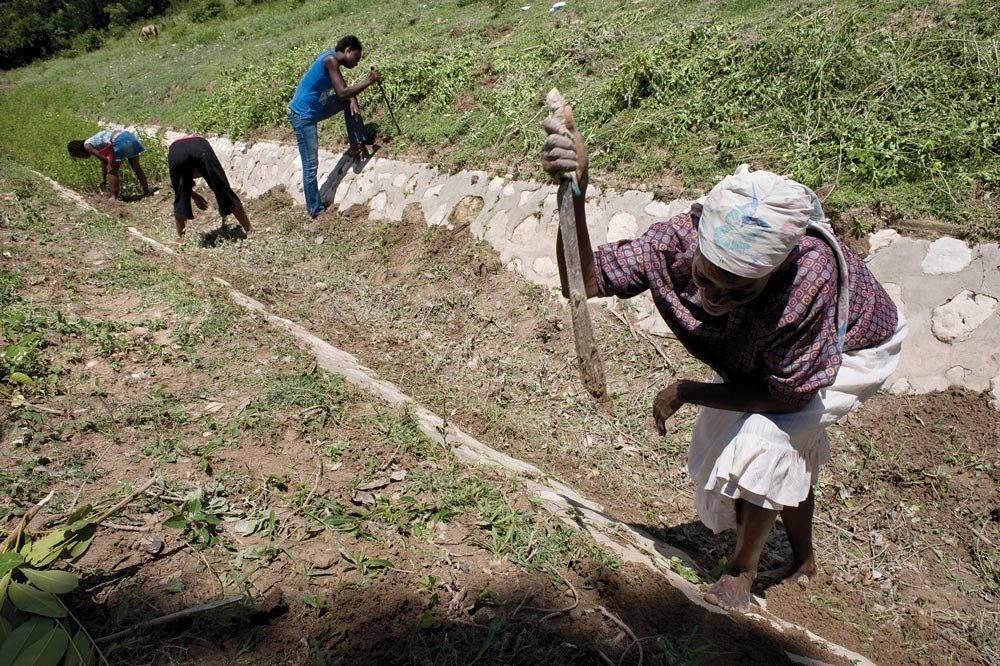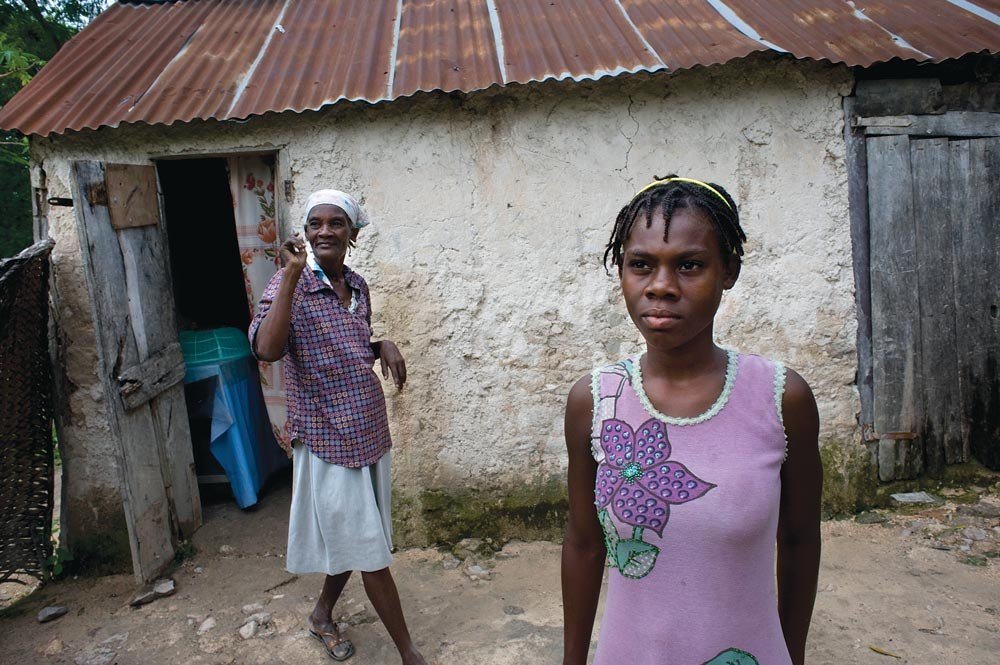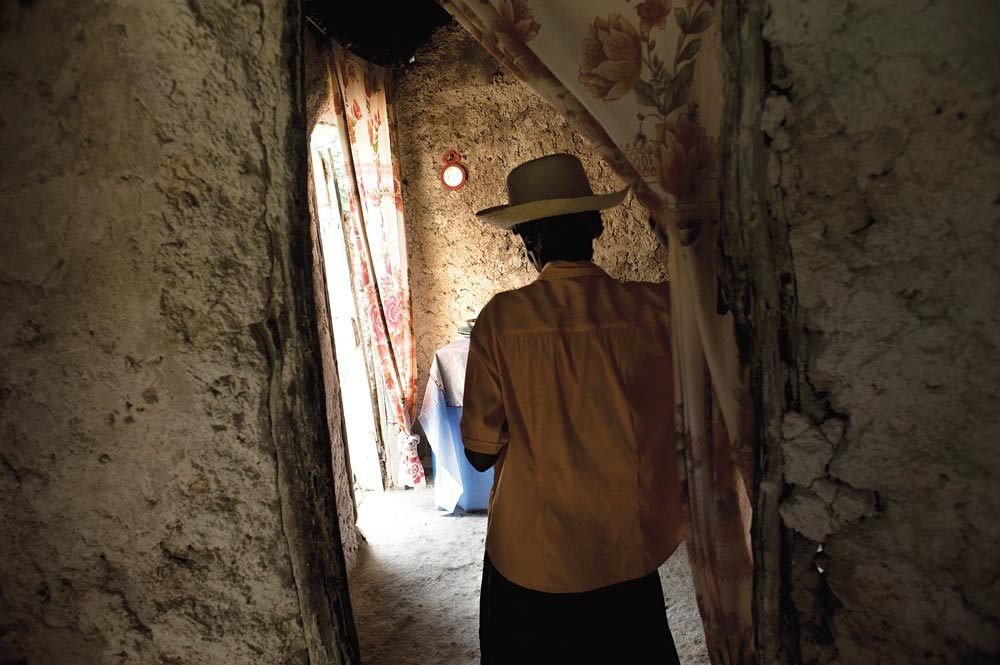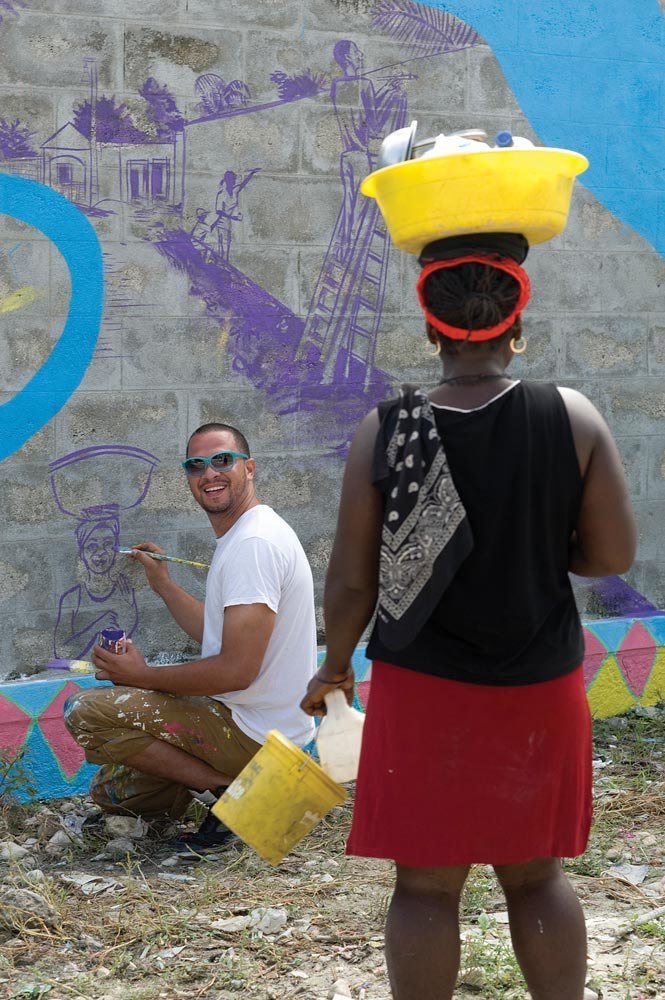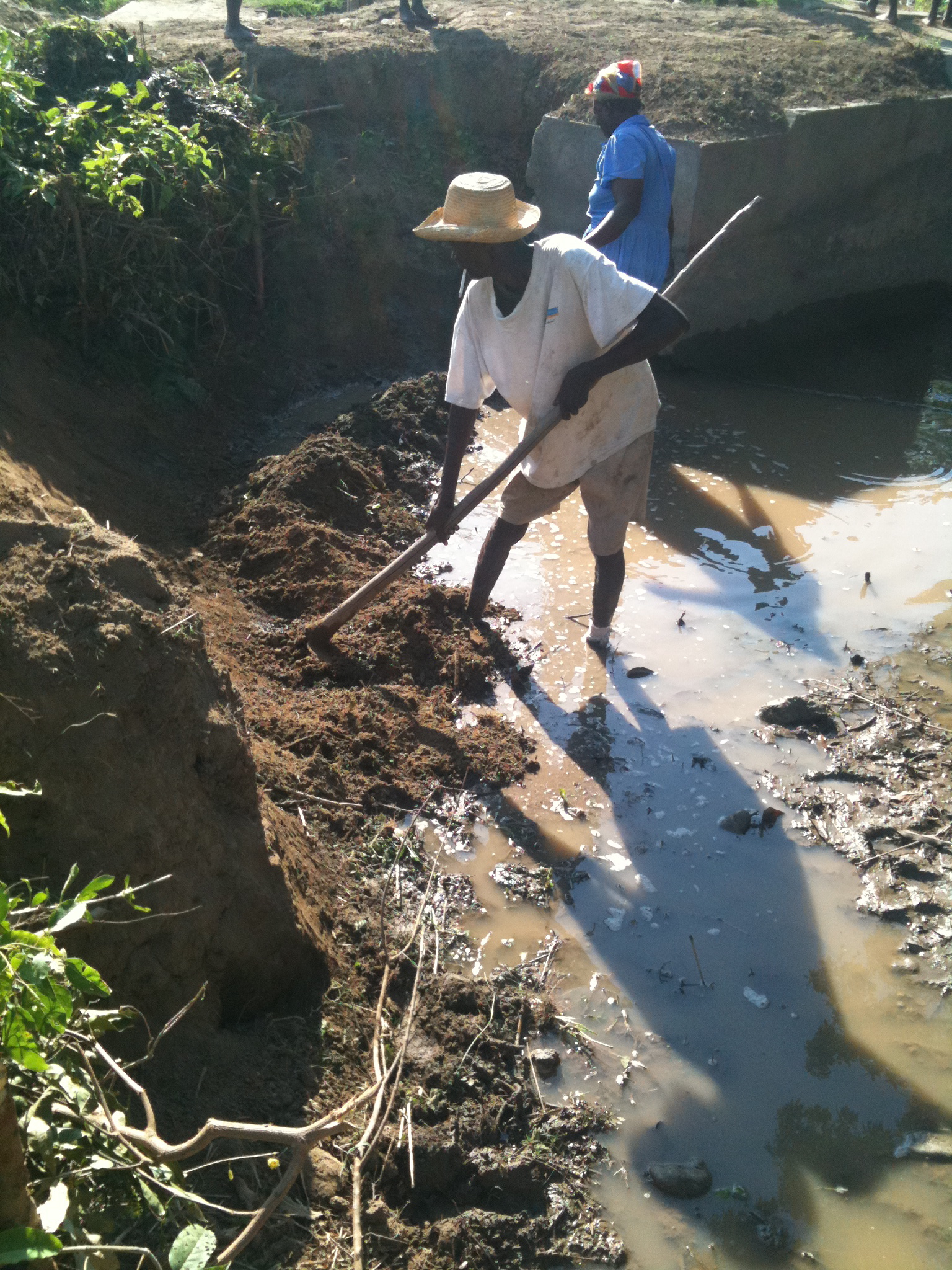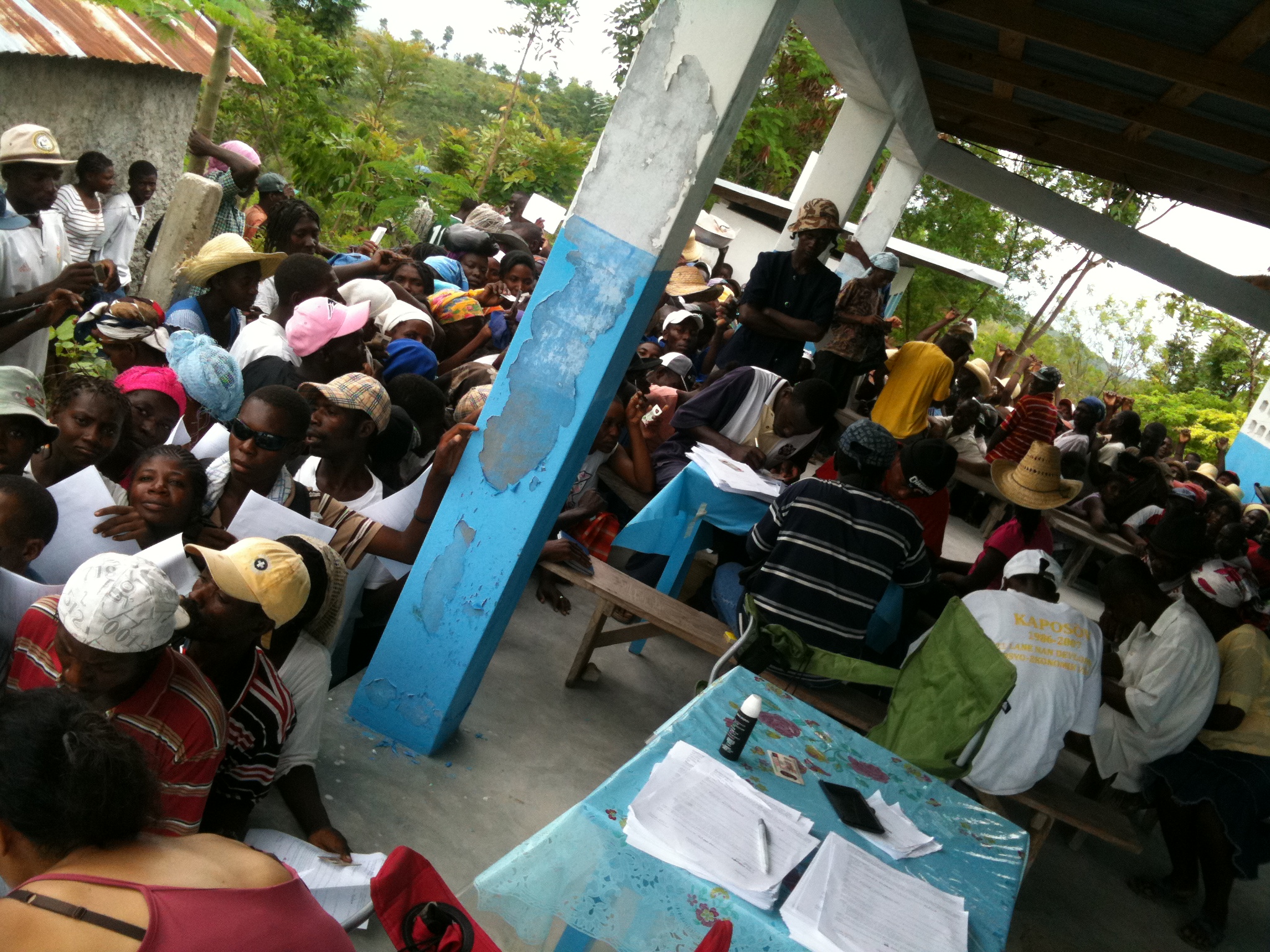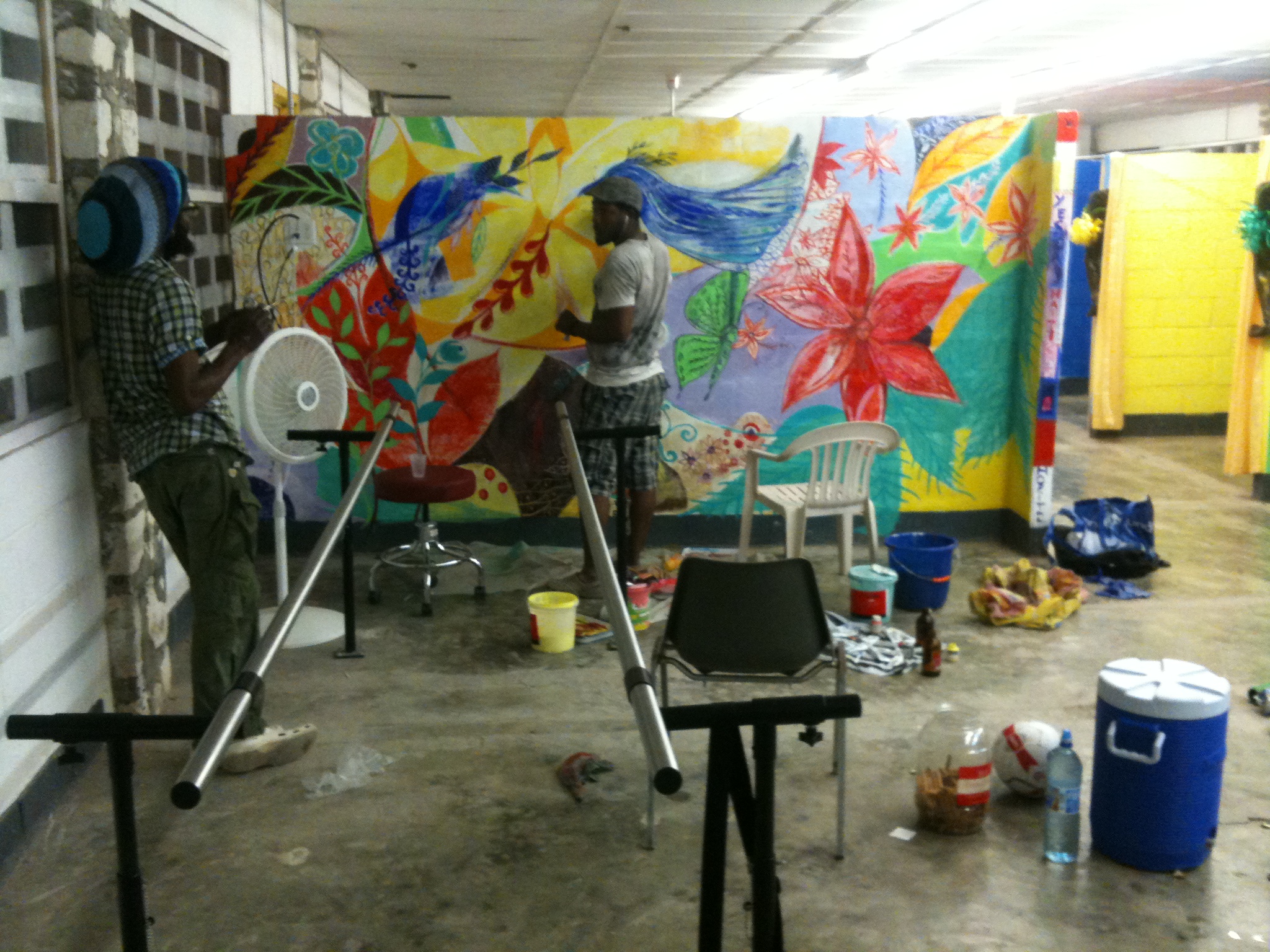Moving the Lives of Kids has a strong connection and commitment to the country of Haiti. Over the last six years MLK Mural has done six community mural projects and a large United Nations (UN) United Nations Office for the Coordination of Humanitarian Affairs (OCHA) OCHA funded Cash for Work Project that provided jobs for 7,000 people and fixed a lot of the infrastructure in the Artibonite Valley. Other Generous Donations include Miami Foundation, Bank of America, Digicel and Louis Wolfson III Foundation.
In 2009 MLK Mural Partnered with Hopital Albert Schweitzer in Deschapelles Haiti, and the Friends of Hopital Albert Schweitzer and Friends of Hopital Albert Schweitzer Haiti to create a community mural. The mural is located at the entrance of Deschapelles from the main highway.
The mural showcases a decorative sign pointing people to the hospital, and several positive images about the community. The project was led by US MLK Artists Edward Rawson, Nicolas Atkins, and Kyle Holbrook, and Haitian MLK artists Joseph Augustine, Absolu Jean-Dodet, and Lacoste De Joces.
The MLK Mural Team worked with the local Deschapelles community group Organization Pour Development Economique et Social (ODES) to develop the concept and themes for the mural. The group also identified 15 outstanding youth from the community to participate in the community mural.
Haitian Artist Absolu Jean-Dodet taking a break to drink sugar cane infront of Executive Artist Kyle Holbrook’s section of the Annugural L’Hopital Deschapelles mural in Fall 2009.. The mural depicts children from the community working on the mural with the "“motoboys” at the corner, this is a signature image in the artists work “The Mural in the Mural”, Mr. Holbrook says “Artworld”.
Tuesday, January 12th 2010 there was a tremendous 7.8 earthquake just outside of Port au Prince, the Capital of Haiti. It was also followed by a series of equally crippling and violent aftershocks. in a matter of moments nearly 300,000 people lost their lives. Thousands more suffered traumatic injuries.
The country suffered some of the worst destruction ever seen from an earthquake. Thousands of homes fell. Schools fell. Government buildings fell. Hospitals fell. Even the prisons fell. The country was in utter chaos. The injured looked for medical support, only to find hospitals fallen and short staffed, doctors and nurses injured, and over crowding everywhere. It was a catastrophe the likes of which never before seen in Haiti. Most were left homeless and helpless and at the very least scarred. Many traveled north in hopes of finding open hospitals and shelter, and hundreds found themselves at HAS.
The world reacted fast. Hundreds of organizations mobilized from every corner of earth and headed to Haiti bringing doctors, medication, and tents. MLK's Edward Rawson was one of the people who ended up on a plane heading to Haiti on a plane sent from Pittsburgh with a number of doctors and a lot of donated medical supplies. Mr. Rawson was heading to HAS to bring much needed medical supplies. The 80 bed hospital turned into an 800 bed hospital in a matter of days. Almost every patient had painful traumatic injuries, and the hospital staff had exhausted its pain killers, and many of its supplies.
It became apparent quickly that beyond the injuries was a much much larger problem that was going to require a lot of work, a lot of assistance and a lot of patience. One of the immediate programs that was implemented within the first few months after the earthquake was known as Cash for Work. Many of the multinational organizations like the United Nations were creating grants for organizations to implement these CFW programs to employ people to do rubble removal all around the impact zone. The programs were meant to be economic stimulus, and an effort to clean up the enormous disaster. It was notable the number of people who migrated outside of the impact zone to other parts of the country in hopes of finding shelter, jobs, and a new life.
MLK in Partnership with HAS created a project that focused on the large number of people who migrated to the Artibonite. We created programs which focused on five core areas 1 Displaced Youth Engagement, Community Murals, and Sports programs, 2 Road Repair, 3 Canal Repair, 4 Animatrice Surveying, and 5 Erosion Prevention - Retainer Walls and Tree Planting. A $750,000 grant was secured from UN OCHA, that would allow for 7,000 temporary jobs. Other Foundations, Corporations and individual donors contributed resources via grants, donations, in-kind support and volunteers.
Photos by Martha Rial
Naomi Roseny infront of a MLK Mural at the Hanger Clinic 2010. Photo by Martha Rial
At the time of the grant the minimum wage in the country was $100 US for a month of work. That does not sound like a lot of money, but Haiti is the poorest country in the western hemisphere and the injection of that much cash into the local economy made a remarkable impact. At every site where people were hired for the CFW project there were always more than twice as many people looking for work as there were jobs.
Pittsburgh Quarterly- Fall 2010- Kyle Holbrook Painting a portrait of a Women as part of the UN- Cash for Work partnership with the United Nations and MLK Mural Project. Holbrook is painting his signature “Mural in the Mural” on the central wall that’s surround the entire downtown Verrettes market place in the Summer of 2010 depicting local artists and community youth painting their perspective sections of the 3,000’ long mural. Nearly 3,000 people were employed by the mural project that not only provided hope but funds and generated redevelopment post earthquake. Photo by Martha Rial
The project made a huge positive impact on the communities around the Hospital. The youth engagement were positive and made displaced youth feel welcome. Nearly a hundred miles of road were repaired or built from scratch connecting communities to hospital resources. Nearly a hundred miles of canal were repaired giving thousands of independent farmers access to much needed water and yielded much better crops. The Animatrices who volunteered for HAS for years had an opportunity to earn some money to identify households that had the most risk factors for malnutrition allowing HAS to proactively address the problems. Thousands of Rock walls were built slowing erosion in some of the harshest farming conditions. An additional $250k was awarded to MLK Mural project from United Nations, OCHA to expand the project due to the success and impact in August 2011. The Total Budget for the 18-month project was $5.3 Million.
Photo by Edward Rawson
Five new murals were created as part of the Youth Engagement project. One in Petit Riviere, one in Verettes, and three in Deschapelles. Art is an important part of Haiti's history. Through most of the 80's Haiti's number one legal export was its arts and crafts. Haiti has a rich cultural, religious, and political history, and in a country where the literacy rate is only 52.9% the stories are told in pictures. The art of Haiti is a celebration of all that makes the country great. MLK Mural had the opportunity to work with dozens of artists who were able to share their ideas and teach the next generation of artists the craft.
